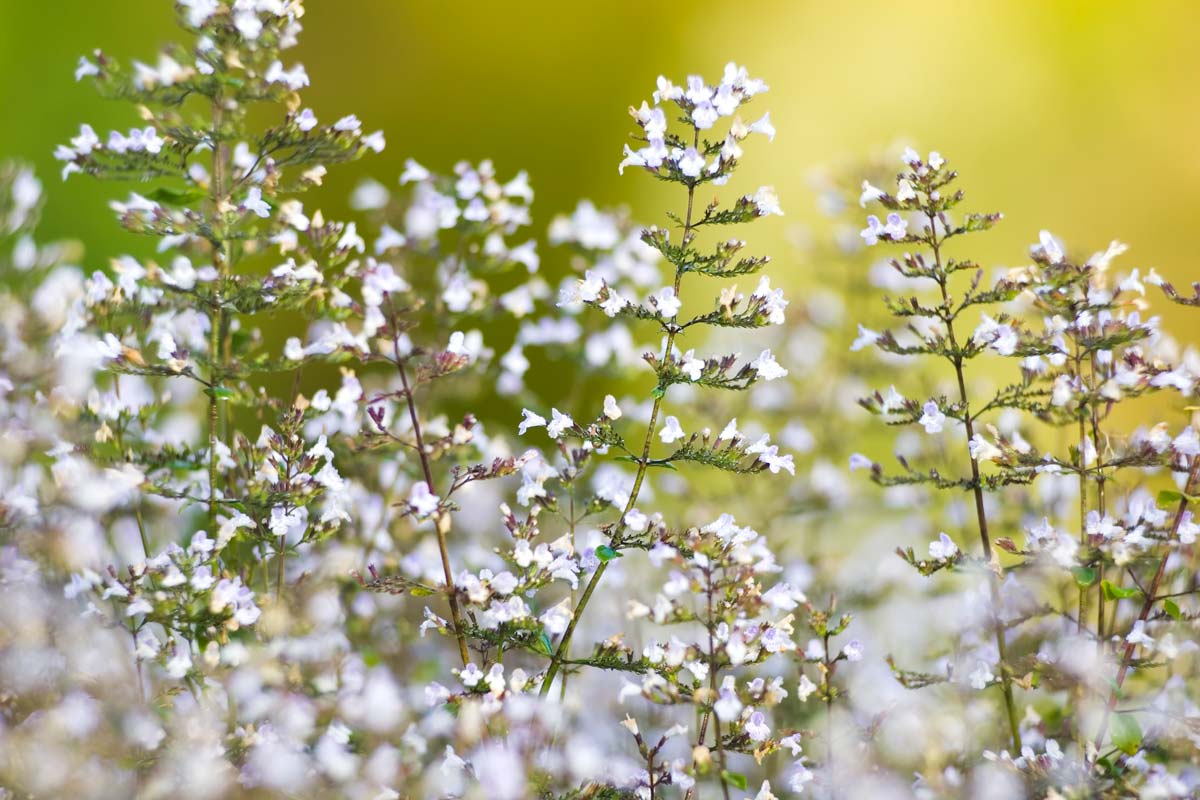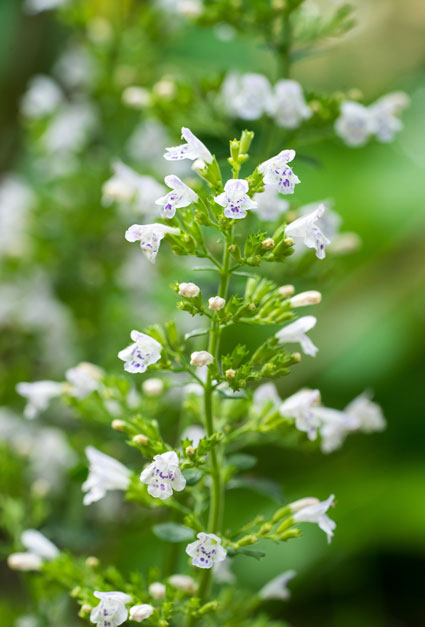Five Perennials That Will Add Color to Your Late Summer Landscape
Learn about five different perennials that will prosper during the late summer and early fall season.
Members of the Perennial Plant Association have voted every year since 1990 to highlight one perennial plant that deserves more use in American gardens. Perennial Plants of the Year are chosen based on traits such as hardiness in a wide range of growing conditions, resistance to bugs and disease, low maintenance, and multiple-season interest. For 2021, the association’s choice is Calamintha nepeta, more commonly known as calamint.
This particular species of calamint blooms for months in summer and early fall in a loud of white, mint-scented flowers. Although it’s not a U.S. native plant (it hails from southern Europe), calamint is attractive to bees, butterflies, and hummingbirds while sidestepping deer trouble.
As a mint-family plant, calamint’s flowers and foliage have a scent that’s typically described as a blend of mint and oregano. The plants are drought-tough once the roots are established, and they’re tolerant of poor soil, with the exception of wet spots.
Calamint pairs well with upright perennials that prefer similar dry, sunny sites, such as asters, threadleaf bluestar, purple coneflowers, black-eyed susans, tall garden phlox, goldenrod, and daylilies. Other good neighbors include most ornamental grasses, shrub roses, butterfly bush, ninebark, and dwarf conifers.
The clusters of tiny white flowers that calamint is known for will start to appear in early to mid-summer and continue into fall, making it one of the longest blooming perennials.

AlpamayoPhoto / iStock / Getty Images
Calamint is best planted in a dry, sunny spot, where it’ll grow in a slowly expanding, mounding habit about 15 to 18 inches tall. Sunny borders, meadows, rock gardens, herb gardens, and driveway edgings are all good site choices. Calamint is hardy in USDA Hardiness Zones 5 to 8.
Calamint seldom, if ever, needs supplemental fertilizer. Watering once or twice a week is needed in the first season to help the roots establish, then water is needed only occasionally in very dry conditions.
Plants can be snipped back in late summer if they’re getting too “leggy” for your taste. Otherwise, the only maintenance needed is a cutback nearly to the ground in fall or the end of winter to remove that season’s frost-killed foliage. It will go dormant in winter.

George Weigel